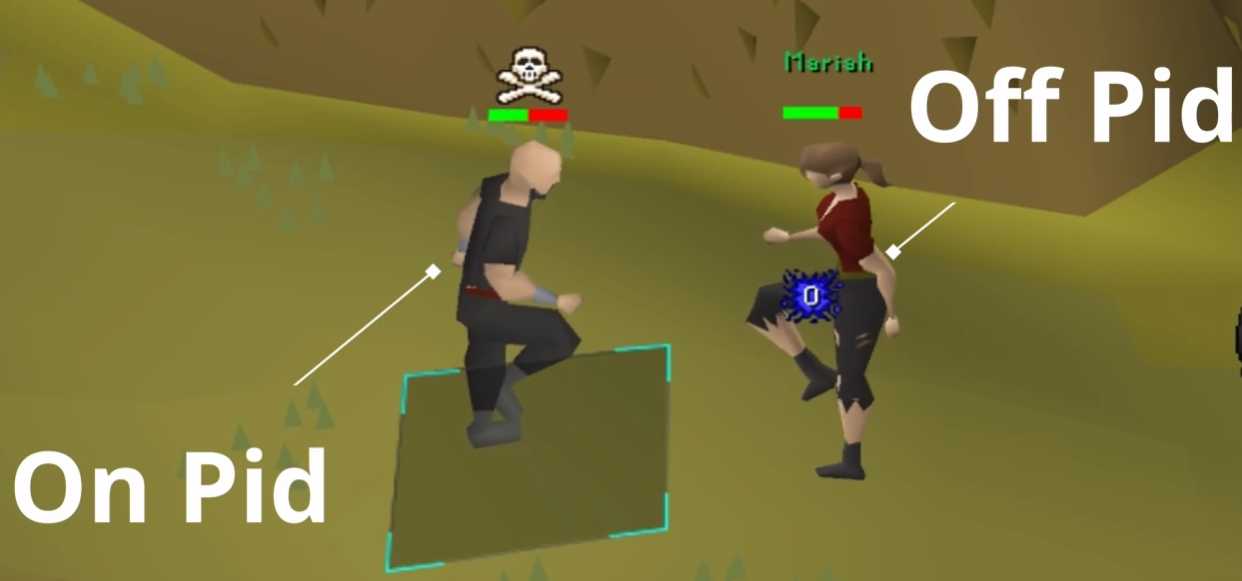How to understand and use PID in OSRS PvP
This guide explains Player Identification Number (PID), how to spot who is "on PID" vs "off PID", and what that means for eating, specs, and stacking damage. Primary reference: OSRS Wiki — Player identification number.

PID (Player Identification Number) determines which player’s damage is processed at the beginning of a game tick and which is processed at the end. The player with PID will have their hit-splat appear at the beginning of the tick; the other player’s hit will appear at the end. This timing difference is what makes certain combos (specs + arrows, venge + spec, etc.) either eatable or not.
- When both players hit at the exact same time, the on-PID hit-splat appears just before the other.
- If you’re not hitting simultaneously, compare your hit-splat to your animation: an early hit-splat (before or early in the animation) means you are on PID; a late hit-splat (end of animation) means off PID.
- Watch examples: range arrows that disappear before a hit-splat indicate off-PID; an arrow that is still visible when your hit-splat appears indicates on-PID.
1) Eating reflected/veng damage
If you are off PID, you must play defensively — your opponent’s venge or reflected damage will process before your eat if they have PID. When on PID you can often land damage early in the tick and still eat the incoming reflected damage before it processes.
2) G-maul (spec) usage
Using a G-maul spec while off PID tends to stack in a way that the opponent can eat; when on PID the spec stacks with other damage and can produce instant KOs. Be cautious with specing when off PID.
3) Vengeance timing
Speccing when off PID is risky because the opponent can venge before your damage processes — causing you to take extra damage and possibly die. High-level PKers often use misc clicks or ring swaps to avoid hitting in that dangerous window.
4) Range damage stacking
MSB style PKing stacks arrow damage with spec damage when on PID. If your opponent is off PID there will be a larger gap and you may have time to eat before the spec processes.
5) PID swaps
PID can change every ~24–36s. A PID swap can make previously eatable damage become uneatable by shifting one source of damage to the beginning of the tick. Recognizing swaps is a high-skill observation that allows capitalization or proper eating.
- When off PID: favor defensive play, delay risky specs, and prioritize eating before the opponent’s damage processes.
- When on PID: you can be more aggressive — landing early damage lets you often eat afterwards or stack specs.
- Use small tactical clicks (ground clicks, ring swaps) to avoid hitting at the wrong time window.
- Practice watching the tick metronome and hit-splat timing in low-stakes fights to learn the visual cues.
Transcript (source video)
PID or player PID Explained & Identifying identification number is essentially who will get the first hit when two people are fighting the player who has PID will have their hit Splat appear at the beginning of a tick where the person who is off pit or doesn't have pit will have their hit Splat appear at the end of a tick pit is really easy to identify when two people are hitting the exact same time as one hit Splat will appear just before the other ... [transcript shortened for readability — full transcript available in video]